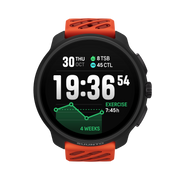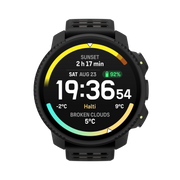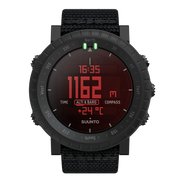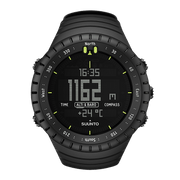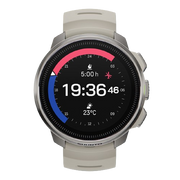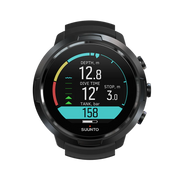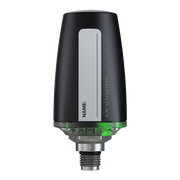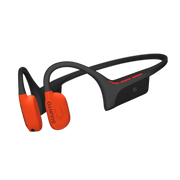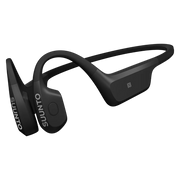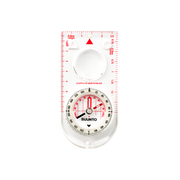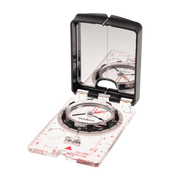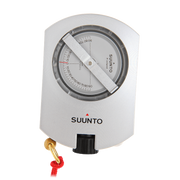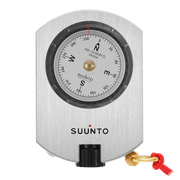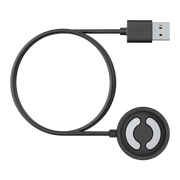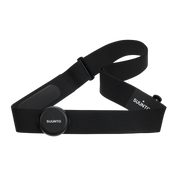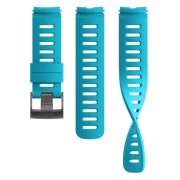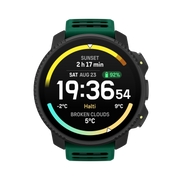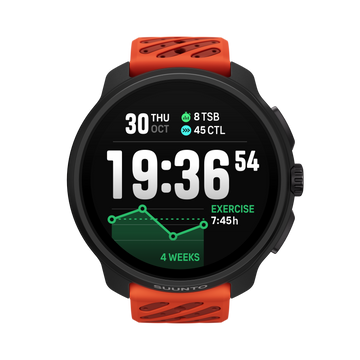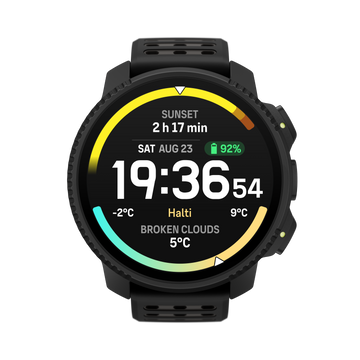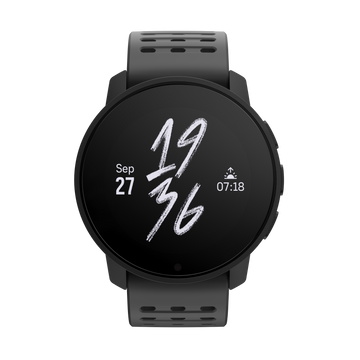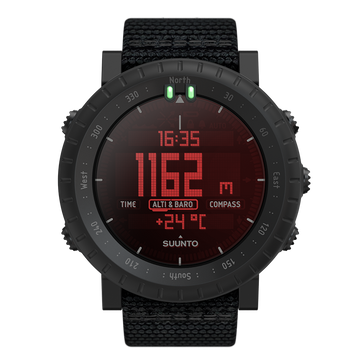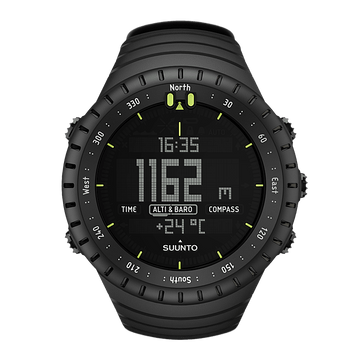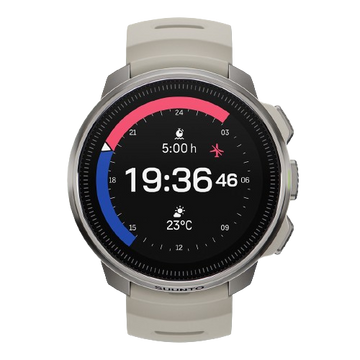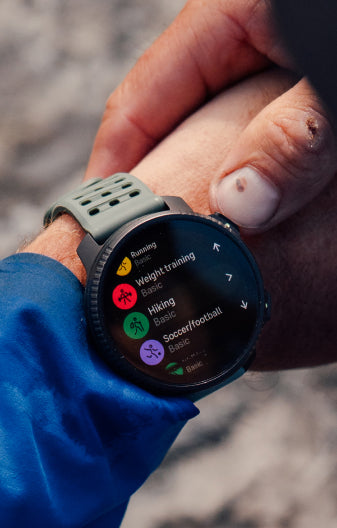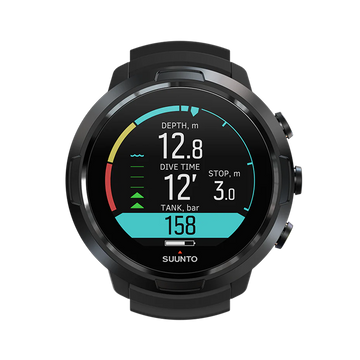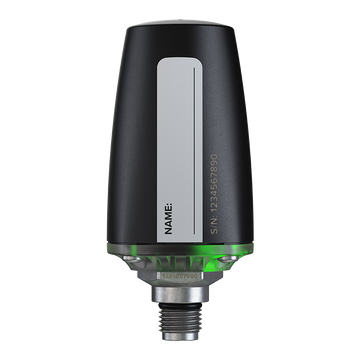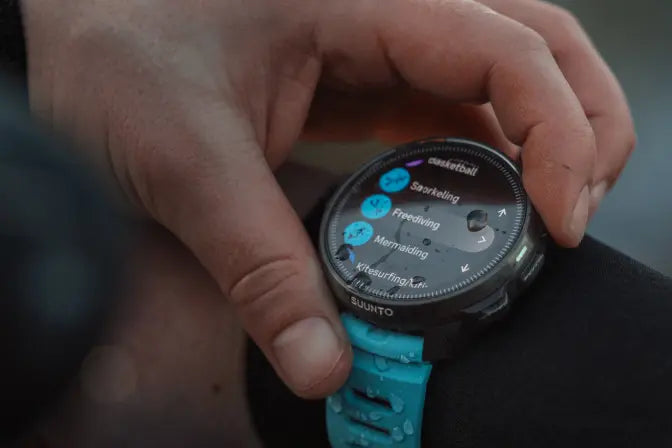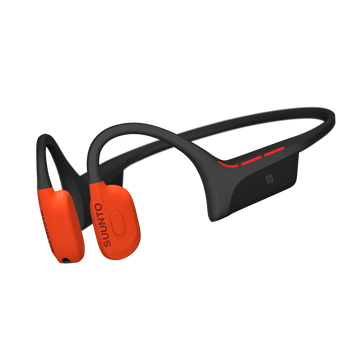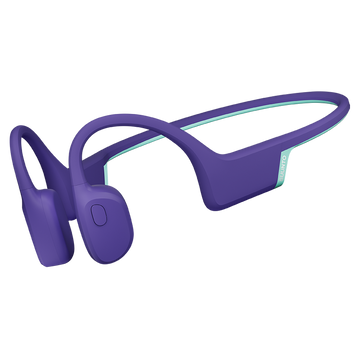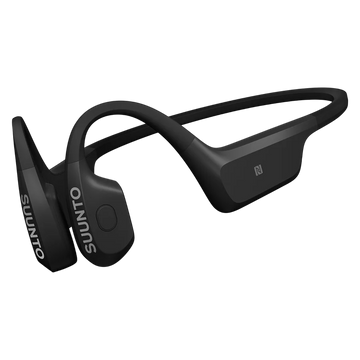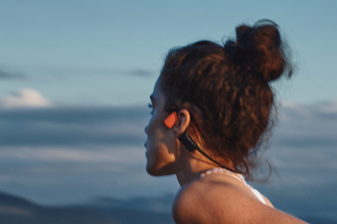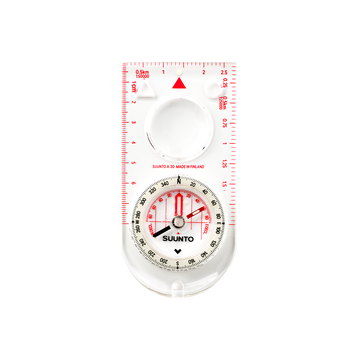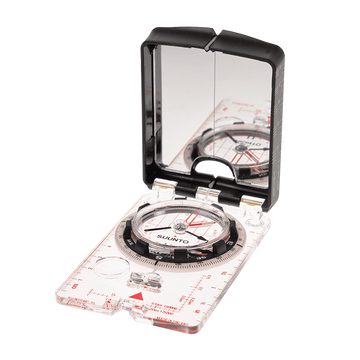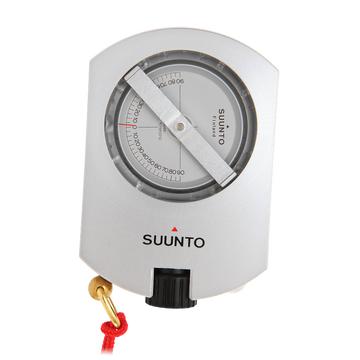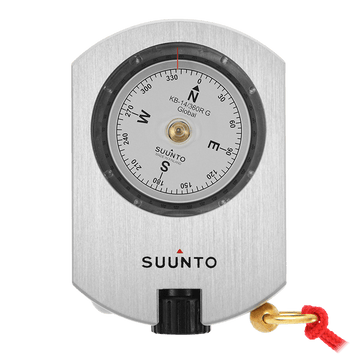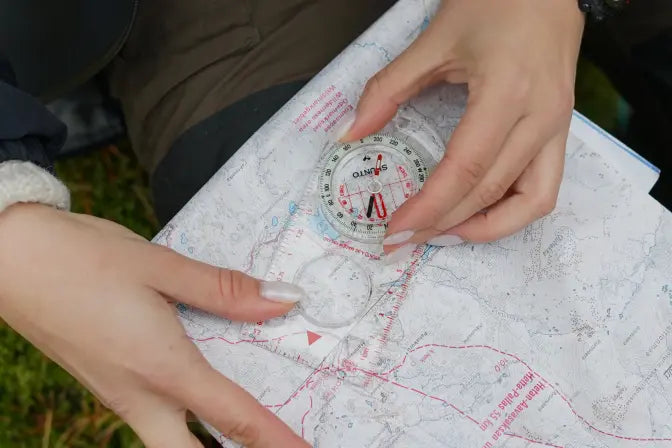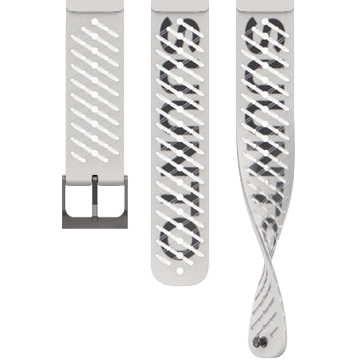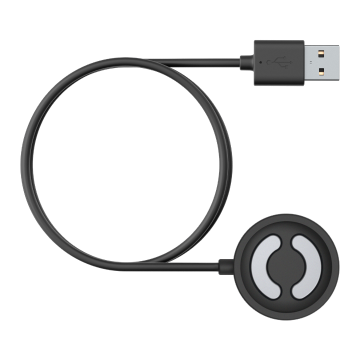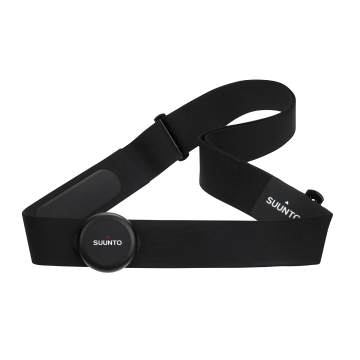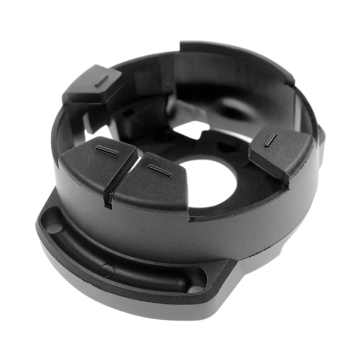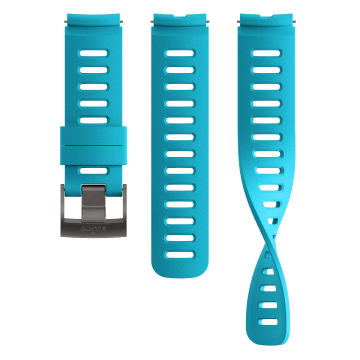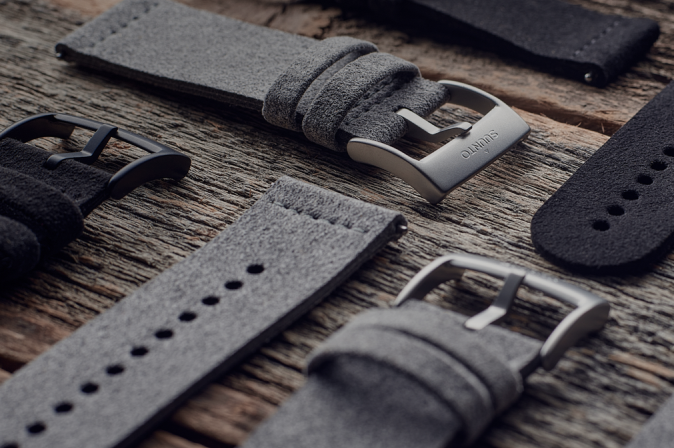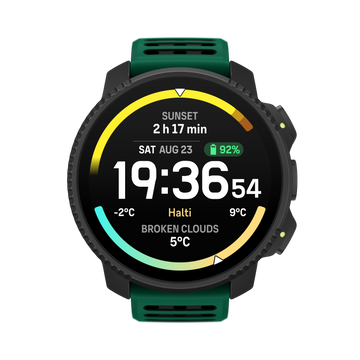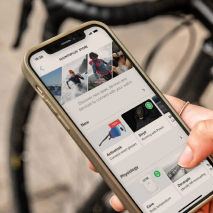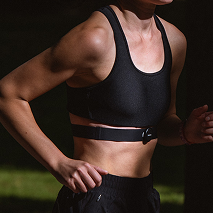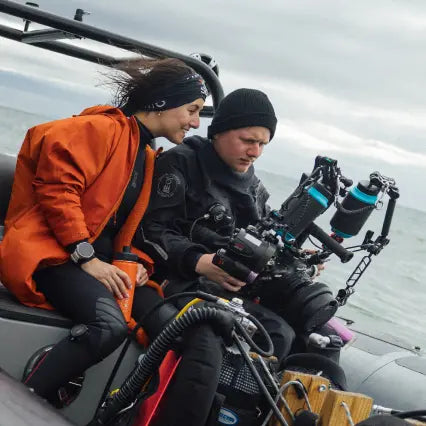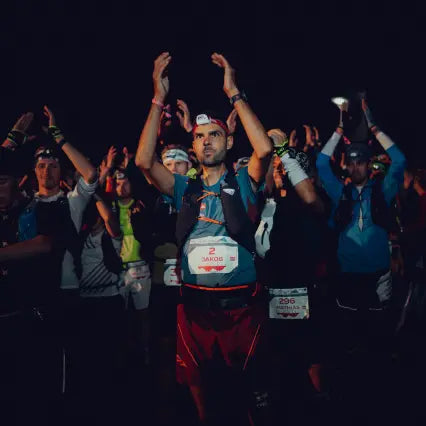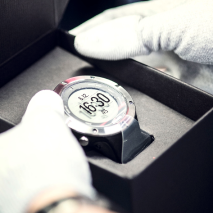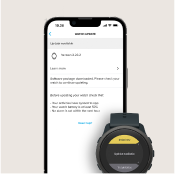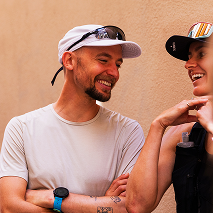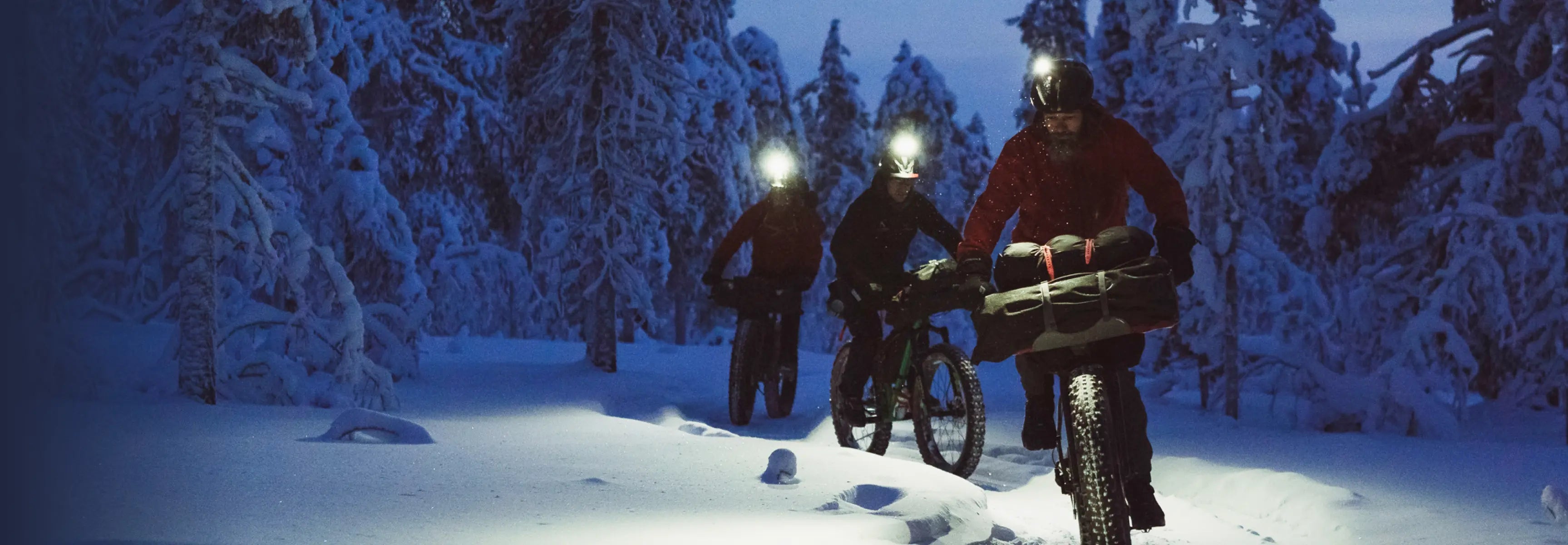
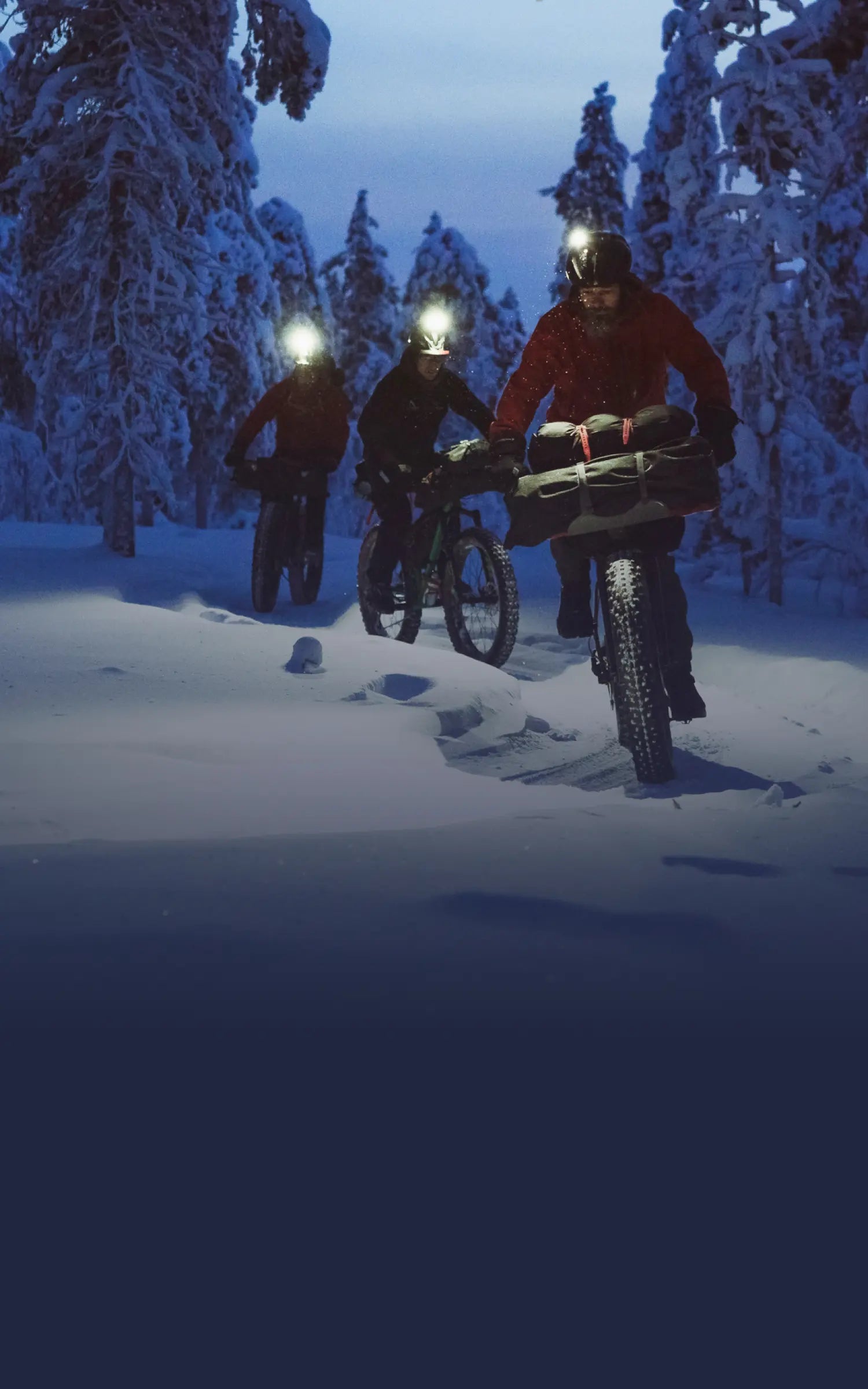
Suunto Blog

Suunto Commuting Day: Doing good one commute at a time
Last week, Suunto users around the world came together for the Suunto Commuting Day in an effort to do good for the planet. Here’s a snapshot of what the global community achieved!
Small, everyday choices are the beginning of change. One single commute may not seem like much, but over time, it all adds up. And when we look at the entire Suunto community, we can see that together we can make a bigger impact!
The combined CO₂e savings for the participants on Thursday, October 24 were over 65,000 kg. This collective effort shows that even small changes in our daily routines can have a real impact.
65,000 kg of CO₂e is equal to about 260 one-way flights from Paris to Berlin, where each passenger's emissions are around 0.25 metric tons for the 1.5-hour trip. It is also similar to the CO₂ absorbed by around 1,300 trees over ten years (based on Tree-Nation’s Eden Reforestation Projects in Mozambique). 65,000 kg is also equal to the emissions of 5,500 Finland-made Suunto Ocean watches generate during their whole lifespan.
Half on bikes, half on foot
Our data revealed that 49% of participants chose to cycle, 31% to run, and 20% to walk their commutes — each step and pedal turn contributing to both personal health benefits and a greener future. Whether on wheels, on foot, or even other creative methods, our Suunto users took meaningful action to reduce their carbon footprint.
Distances covered and time invested
Cyclists typically commuted around 7.9 km per trip, spending 28 minutes on average.
Runners tackled 6.1 km per commute, taking 40 minutes on average.
Walkers covered 2.7 km on average, enjoying 35 minutes outdoors.
The bike commute distances are distributed quite evenly over different distances: roughly a third is less than 5 km, a third is between 5–10 km, and a third is over 10 km. The longest commuting rides last Thursday were over 100 km.
Top commuting champions by country
Our Swiss users led in cycling distances with an impressive 10.3 km being the most typical commuting distance, while runners in China topped the charts, typically covering 7.5 km per commute.
Globally, France took first place for the total distance covered by its participants, followed closely by Finland, Germany, Spain, and China.
Suunto’s Commuting Day is a testament to what’s possible when people come together for a common goal. These statistics show that, collectively, we’re reducing emissions, embracing healthier lifestyles, and setting a precedent for sustainable commuting worldwide.
Thank you everyone for participating in the Suunto Commuting Day and also the photo contest. Winners of the Suunto Wing open-ear headphones have been contacted directly.
Please remember that our small everyday choices make a difference over a longer period of time and together with the community. Keep up the good work!
Learn more about tracking human-powered commutes and your CO2e savings
Learn more about Suunto sustainability work

Get ready for a gravel race!
Nordic Gravel Series team member, rider and coach Joonas Henttala gives his essential tips for a successful gravel race.
Joonas Henttala, a coach and a Nordic Gravel Series team member, has more than 10 years of experience in the professional peloton. In 2023, after ending his road cycling career, he turned to coaching and gravel event organizing, took up trail running as his personal challenge while also riding gravel.
We got in touch with Joonas to get some tips for a gravel race. Read on and be ready for a big, fun day out!
Progressively build your fitness
Gravel races are long and require a strong, aerobic base, which is built by spending quality time in zone 2 and later layering higher intensities and race spesific efforts on top.
Joonas says that consistency and progressively adding training load are the keys to successful endurance training.
“Riding one hour five times weekly is a better start than a five-hour smash-fest once a week. After your body starts to adapt, you can progressively add more training load. It does not make sense to do a huge hero ride way beyond your limits on the weekend and then recover from it the entire following week. The body simply can’t assimilate that and progress will be slow. The aerobic needs required in a long event or race need consistent stimulus over long periods of time.”
The slower speeds and smaller groups make the power output on gravel slightly different from the road.
“On the road there’s often more coasting and higher power peaks, while gravel riding is more grinding, keeping constant pressure on the pedals,” Joonas explains.
Get comfortable riding in a group. (Image: NGS/Falling Leaves Lahti)
Practice your bike handling
Solid bike handling skills are essential as gravel riding can get technical, almost like mountain biking. Especially if your background is in road cycling, practicing your bike handling can be very beneficial.
“If you come from the road, you may assume there’s grip everywhere. But gravel is different. You must learn to find the grip on a surface that’s moving underneath you. Practice different kinds of turns on different surfaces.”
Mountain bikers are comfortable with the varied terrain. For them, Joonas recommends getting comfortable riding in a big group. The first hour of a gravel race can be especially hectic. Still, you should be able to stay relaxed and not get intimidated by leaning on one another or touching handlebars with someone.
“Joining a few group rides before taking part in a gravel race is definitely a good idea. After a few of them, you will start to feel more comfortable,” he promises.
“Solid bike handling skills and experience from group riding help you save energy, too.”
Get to know the course
Knowing the course well is definitely beneficial. However, pre-riding the entire course is often not an option as the distances of gravel events are so long. That’s when the Suunto app comes in handy: Import the route GPX file to the Suunto app (or sync it from a compatible partner service, like Strava or Komoot) and study the course. Look at the altitude profile to identify the big climbs – and descents.
“Try to save some energy for the big climbs. That’s where the strong riders will make their moves,” Joonas instructs.
“That same applies to other parts of the course as well: Try to save energy when riding easy sections, like roads. When the riding gets more technical and the speeds slower, be prepared to hammer.”
The map in the Suunto app is a great way to identify those key sections: Look at the roads, tracks and trails. How wide are they? When is it getting technical? If, for example, a road narrows to a single track, you don’t want to be in the back of the group and stuck in a traffic jam. Take your positions early.
The fun is about to get real! (Image: NGS/Falling Leaves Lahti)
Refuel early
In a long endurance event, a steady pace would be optimal – but often far from reality in gravel races. If you want to stay in the front, the first hour is decisive: You must weigh whether you can afford to ride a little too fast in the beginning to stay with the group without bonking.
Try to also conserve energy: Draft in the group and remember to start refueling already at the beginning of the long race. If you don’t refuel during the first hour, you will have to pay for the consequences later.
“Riding should feel hard, but not so hard that after the first hour, you’ll start to question if you’ll be able to finish the race,” Joonas says.
Having the necessary energy in the bottle for the first hour might be a good idea. This way you don’t need to mess with gels and bars in the heat of the early part of the race.
Remember what’s important
People take part in gravel events with quite different approaches: some are there to win, others to test their own limits. Some simply want to have a good time on the bike and make new friends.
“Gravel races are quite different from road races. Even in the lead group people chat and have smiles on their faces. I certainly hope it stays this way,” says Joonas.
Whatever your goal, ride hard but be polite and considerate of others.
“If you cross the finish line with emptly legs and a big muddy smile on your face, the day has been successful – whatever your goal!”
Coach Henttala himself after Traka 360 in Girona in May 2024.
Learn more about the Nordic Gravel Series

Connect your Suunto with Shimano Di2 electronic shifting
Want to know what gears you use and monitor the battery on your electronic shifting? Read on and learn how – and why – to connect your Suunto with Shimano Di2 electronic shifting.
The new Shimano Di2 SuuntoPlus sports app connects your Suunto sports watch with Shimano’s electronic shifting for real-time guidance and saves data for after-ride analysis.
See the gears you are using and the status of your Di2 battery on your Suunto.
Through the Shimano Di2 SuuntoPlus sports app, developed in partnership with Shimano, you can monitor crucial data such as gear positions and Di2 battery status directly on your Suunto.
You can view details of your shifting after your ride in Suunto app.
The SuuntoPlus sports app also saves Shimano Di2 data in Suunto app for later analyzes. It can be viewed in relation to power and speed, for example.
What gear I am on (and why should I care)
Shimano Di2 SuuntoPlus sports app offers clear benefits both during and after the ride. During the ride, you will easily see how much battery you have left in your electronic shifting system and the gears you are on. The gears you use, are also saved as part of the activity in Suunto app. Taking a moment to study these, may give you some interesting insights.
Firstly, you will learn what gears you mostly use. Did you mostly use the higher or the lower gears or was the use well in balance? This can lead to two findings: is your gearing right for the terrain and how’s your chainline.
If you spend most of the time on the lower gears and hardly ever touch the higher ones, you may want to consider a smaller chainring. Or if you are a lot on the hardest gear and spinning out, a bigger chainring might be a good option.
Another consideration is the chainline. The word ‘chainline’ refers to how straight your chain runs between the front chainring(s) and the rear sprockets. A straigt chainline is more effective and stresses the components less. So, spending more time on rear sprockets that offer a straight, “perfect” chainline is smart. This data can be collected with the Shimano Di2 SuuntoPlus sports app.
How to use SHIMANO Di2 SuuntoPlus sports app
Sync the Shimano Di2 SuuntoPlus sports app to your watch from Suunto app’s SuuntoPlus Store.
Select the Shimano Di2 SuuntoPlus sports app in the exercise settings before starting your workout.
During activity, scroll with the middle button to view the SuuntoPlus screen.
Shimano Di2 SuuntoPlus sport apps stores data for after analysis in Suunto app.
Next time you start your ride with the same sport mode, your Shimano Di2 SuuntoPlus sports app is selected as default and connects with your Shimano Di2.
Happy riding!
Lead image: Philipp Reiter / The Adventure Bakery

View your e-bike data on your Suunto watch
Are you riding an e-bike with your Suunto? Now you can connect your watch with SHIMANO E-BIKE SYSTEMS bicycles. Learn how to do it!
Cycling is one of the key sports within the Suunto community, with enthusiasts leveraging Suunto's advanced GPS watches to monitor and optimize their performance and explore new terrain.
Suunto’s compatibility with SHIMANO E-BIKE SYSTEMS equipped e-bikes is a new addition to meet the diverse needs of cyclists. So, whether you are hitting the trails or commuting on a bike path on your e-bike, read on!
SHIMANO E-BIKE SYSTEMS SuuntoPlus sports app, a feature developed in collaboration with SHIMANO, shows you the assistant mode (Eco, Boost, Trail), power assistance level, e-bike battery status, speed and heart rate directly on your Suunto watch in real-time during your ride.
The sports app also stores that data for after-ride analysis: You can, for example, see the assistant percentage along with the other data you tracked with your Suunto watch in Suunto app.
How to use SHIMANO E-BIKE SYSTEMS SuuntoPlus sport app
Sync the SHIMANO E-BIKE SYSTEMS SuuntoPlus sports app to your watch from Suunto app’s SuuntoPlus Store.
Select the SHIMANO E-BIKE SYSTEMS SuuntoPlus sports app in the exercise settings before starting your workout.
During activity, scroll with the middle button to view the SuuntoPlus screen.
SHIMANO E-BIKE SYSTEMS SuuntoPlus sports app stores data for after analysis in Suunto app.
Next time you start your ride with the same sport mode, your SHIMANO E-BIKE SYSTEMS SuuntoPlus sports app is selected as default and connects with your SHIMANO E-BIKE SYSTEMS bicycle.
SuuntoPlus sports app is compatible with the SHIMANO E-BIKE SYSTEMS equipped with SHIMANO Wireless Units. SHIMANO Wireless Units can be equipped with following SHIMANO E-BIKE SYSTEMS Drive Unit Models:
EP801, EP6
EP800 / E6100/E6180/E5000/E5080
E7000
E8000 / E8080 (Only E6000 cannot be equipped for SHIMANO Wireless Units)

Revealing Secrets of the Heart with DDFA by MoniCardi
A Technological Breakthrough from Tampere University
MoniCardi, a medical technology and software company originating from Tampere University, has been diligently developing novel and heart rate variability (HRV) methods to decode the intricate phenomena of the human body. The MoniCardi team aims to unveil the various physiological characteristics influenced by the heart's behavior, opening new frontiers in health and performance measurement.
The Foundation: Validation with Massive Datasets
MoniCardi's groundbreaking research is rooted in statistical and time-series analysis methods originally developed in computational physics. These methods have surprising, yet highly impactful applications in electrocardiography, including HRV analysis.
MoniCardi's novel methods and their usefulness have been validated in various scientific studies [1-9] and they have been featured in the leading conferences of cardiology such as the Scientific Sessions of American Heart Association. The studies include exploitation of massive datasets such as the extensive Finnish Cardiovascular Study (FINCAVAS), which contains comprehensive measurement data from 4386 participants of a clinical stress test. In a recent breakthrough study [1], it was found that MoniCardi's HRV analysis of a one-minute rest phase prior to the test predicts sudden cardiac death significantly better than the conventional analysis of the complete 20-minute stress test (hazard ratios of ~2.5 and ~1.5, respectively). The superiority of MoniCardi increases further when considering all the other risk factors in the analysis.
Outside clinical studies, MoniCardi's patented methodology allows accurate estimation of metabolic thresholds in sport applications. This was confirmed in a ground-breaking study published by the team in the leading physiological journal in 2023 [2]. The study was featured in several national and international news sites, including a full-page article in the main Finnish newspaper Helsingin Sanomat (link below). The results are currently under validation in academic collaboration between Tampere University and the Finnish Institute of High-Performance Sport (KIHU). Through a partnership with Suunto launched in 2024, MoniCardi's novel technology is now entering in the use of professional athletes, sport enthusiasts and all the consumers interested in these novel features that push the HRV analysis into a completely new level and ensure practical and actionable results.
Understanding Heart Rate Variability (HRV)
Heart rate variability (HRV) measures the variation in the time intervals between consecutive heartbeats. By analyzing the fluctuations in these intervals, it is possible to gain insights into the body's state, particularly the autonomic nervous system's influence on the heart. Conventionally, HRV has been used to gauge recovery states during sleep through RMSSD (Root Mean Square of Successive Differences), which observes nightly changes in HRV to detect stress levels. At rest, the body shows significant variability between heartbeats, known as HRV. However, as the body encounters increased stress, the autonomic nervous system shifts into the fight-or-flight mode, resulting in minimal heart rate variability. This reduction in HRV can be used as an indicator to assess stress levels.
Introducing DDFA: A Revolutionary Measurement Technology
HRV methods are conventionally split into time-domain, frequency-domain and nonlinear methods. One of the most common nonlinear methods is Detrended Fluctuation Analysis (DFA) developed in the early 1990s. The key information provided by DFA is the overall long-term characteristics of HRV in terms of correlations, in particular, how changes in heartbeat intervals at some time affect the changes at another time. This information has powerful predictive value, but the practical usefulness of this information was unleashed only recently, when Dynamical DFA (DDFA) was developed [8,9] and further refined to assess changes in HRV correlations in a time-sensitive manner [10]. In brief, DDFA utilizes a multitude of "measure sticks" from 4 up to >50 consecutive heartbeats. At every instant of time, DDFA then gives a so-called scaling exponent - a characteristic feature of correlations in heartbeat intervals - for all these measure sticks simultaneously. This information can be precisely mapped to the physiological state during physical exercise.
Real-Time Intensity Monitoring
DDFA excels in assessing real-time changes in the heartbeat correlations during exercise. Training intensity directly correlates with time- and scale-dependent variations in the DDFA scaling exponent. Research indicates that increasing intensity in physical exercise decreases the scaling exponents. Eventually, at very high intensities, the beat-to-beat intervals may show so-called anticorrelations, where large and small beat-to-beat intervals alternate in a specific manner depending on the time scale. This information allows for precise monitoring of exercise intensity and physiological thresholds.
Visualizing DDFA in Action
A pivotal study, "Estimation of Physiological Exercise Thresholds Based on Dynamical Correlation Properties of Heart Rate Variability," published in Frontiers in Physiology in 2023 [2] illustrates DDFA's capabilities. The research paper presents an exercise scenario where intensity increases over time. The cyan lines denote the two metabolic thresholds: LT1 (aerobic threshold) and LT2 (anaerobic threshold), with the black dotted set on locations where these thresholds would be based blood lactate levels.
This illustrates an ideal scenario where the DDFA-based analysis yields threshold levels nearly identical to those obtained using lactate-based threshold definitions. While this represents the optimal case, variations are expected in real applications. The DDFA analysis and lactate-based thresholds may differ from case to case, with heart rate measurements typically matching within +-5 beats per minute. There are also uncertainties inherent in lactate thresholds, which are subject to interpretation.
Validity up to clinical accuracy
MoniCardi methodology has been used to predict the overall cardiac risk and sudden cardiac death [1], and several cardiac diseases such as long QT syndrome [4,5], atrial fibrillation and congestive heart failure [in preparation]. The methods have also been applied to estimate stress and sleep stages [6,7]. The prediction of sudden cardiac death [1] has gained traction and it was featured in all the big news sites in Finland (YLE, Helsingin Sanomat, Ilta-Sanomat, Aamulehti) and on several international news sites (list below).
In medical technology, MoniCardi is currently collaborating with Cardiolex Medical, a Swedish MedTech company developing modern ECG devices and systems. MoniCardi is also seeking partners in wearable technologies to bring cardiac risk assessment to mass markets.
References:
[1] Jussi Hernesniemi, Teemu Pukkila, Matti Molkkari, Kjell Nikus, Leo-Pekka Lyytikäinen, Terho Lehtimäki, Jari Viik, Mika Kähönen, Esa Räsänen, Prediction of sudden cardiac death with ultra-short-term heart rate fluctuations, JACC: Clinical Electrophysiology, 2024
[2] Matias Kanniainen, Teemu Pukkila, Joonas Kuisma, Matti Molkkari, Kimmo Lajunen, and Esa Räsänen, Estimation of Physiological Exercise Thresholds Based on Dynamical Correlation Properties of Heart Rate Variability, Front. Physiol. 14 (2023).
[3] Teemu Pukkila, Matti Molkkari, Matias Kanniainen, Jussi Hernesniemi, Kjell Nikus, Leo- Pekka Lyytikäinen, Terho Lehtimäki, Jari Viik, Mika Kähönen, and Esa Räsänen, Effects of Beta Blocker Therapy on RR Interval Correlations During Exercise, Computing in Cardiology 50 (2023) 10.22489/CinC.2023.104
[4] Matias Kanniainen, Teemu Pukkila, Matti Molkkari, and Esa Räsänen, Effect of Diurnal Rhythm on RR Interval Correlations of Long QT Syndrome, Computing in Cardiology 50 (2023) 10.22489/CinC.2023.287 [5] T. Pukkila, M. Molkkari, J. Kim, and E. Räsänen, Reduced RR Interval Correlations of Long QT Syndrome Patients, Computing in Cardiology 49 (2022) 10.22489/CinC.2022.284
[6] Teemu Pukkila, Matti Molkkari and Esa Räsänen, Dynamical Heartbeat Correlations During Complex Tasks – A Case Study in Automobile Driving, Computing in Cardiology 48 (2021) 10.23919/CinC53138.2021.9662676
[7] M. Molkkari, M. Tenhunen, A. Tarniceriu, A. Vehkaoja, S.-L. Himanen, and E. Räsänen,
Non-Linear Heart Rate Variability Measures in Sleep Stage Analysis with Photoplethysmography, Computing in Cardiology 46 (2019); 10.22489/cinc.2019.287
[8] M. Molkkari, G. Angelotti, T. Emig, and E. Räsänen, Dynamical Heartbeat Correlations During Running, Sci. Rep. 10, 13627 (2020)
[9] M. Molkkari and E. Räsänen, Robust Estimation of the Scaling Exponent in Detrended Fluctuation Analysis of Beat Rate Variability, Computing in Cardiology 45 (2018); 10.22489/CinC.2018.219
[10] M. Molkkari and E. Räsänen, Inter-beat interval of heart for estimating condition of subject, Patent pending.
Latest news of MoniCardi
International news:Science Daily: https://www.sciencedaily.com/releases/2024/06/240613140808.htmScience Alert: https://www.sciencealert.com/new-algorithm-can-predict-and-help- prevent-sudden-cardiac-deathMirage News: https://www.miragenews.com/tampere-university-researchers- predict-sudden-1255528/Medical XPress News: https://medicalxpress.com/news/2024-01-method-based-series-analysis-thresholds.html
Finnish news:
YLE: https://yle.fi/a/74-20093771Helsingin Sanomat: https://www.hs.fi/tiede/art-2000009847625.htmlIlta-Sanomat: https://www.is.fi/terveys/art-2000010505400.htmlAamulehti: https://www.aamulehti.fi/tiedejateknologia/art-2000010497986.html https://www.aamulehti.fi/tiedejateknologia/art-2000009863997.htmlSTT: https://www.sttinfo.fi/tiedote/70082024/aikasarja-analyysiin-perustuva-uusi-menetelma-helpottaa-urheilun-kynnysarvojen- maarittamista?publisherId=69818730&lang=fi

Pedaling to volcanic peaks
Brody Leven recently cycled from Portland, Oregon to Seattle, Washington, with the goal of climbing and skiing huge volcanoes that were 'on the way'. Surprisingly, he tells us the downhills were harder than the ascents...
What the idea behind this trip? The goal was for two college friends, who hadn't had an adventure together in years, to ride bikes from Portland to Seattle...the long, hard, and painful way – effectively tripling the typical route's distance – in order to climb and ski Mt. Adams, Mt. St. Helens, and Mt. Rainier, three huge Washington volcanoes. Personally, I wanted to combine two activities that I love, ski mountaineering and bike touring. We also wanted to remind ourselves that we don't need big budgets, helicopters, worldly knowledge, or even a passport to have a good, old-fashioned adventure. What bike were you riding? It's a hybrid cyclocross/touring bike – a triple-ring, aluminum frame, with a carbon fork, fenders, comfortable touring seat, racks, five panniers, and customized single-axle trailer. I've only ridden the bike three times in four years: solo across the United States in six weeks, around the coastline of Hawaii in two weeks, and now the hard way from Portland to Seattle in two weeks. I'd never put a trailer on it before this trip.How hard is it to cycle with all that gear? It isn't even like riding a bicycle. It feels as though you're riding something different, something other than a bike, some sort of vehicle. If you look over your shoulder and swerve, you're going in the ditch (which I learnt the hard way). You can't just throw your leg over the top and start peddling – instead, you need to do this weird running push-start. The weight made it incredibly difficult to ever get out of the granny gear.How much did it all weigh? 150-200 pounds (68 kg - 90 kg) without me. Weight fluctuated with water and food supplies.
How were the downhills?I wasn't comfortable enough to really get moving fast down hills until ten days into the trip, when I started to use my body as a sail to slow down. This is noteworthy because going downhill was often much more difficult than going uphill, since my brakes were almost worthless with that much weight moving the bike. You had to keep it perfectly upright in order for it not to fall over, and the trailer was constantly in danger of jack-knifing. Road or off-road? Maybe 75 miles (120 km) we biked were on loose dirt, gravel, or sandy roads. But they accounted for about 90% of the trip's overall effort, as they were often on the biggest hills.Did you have to push? Not uphill! But descending hills was so hard that I occasionally had to step off and walk my bike for a while, allowing my brakepads and rims to cool off (they were very hot to the touch, noisy, and ineffective). Even walking it down hills was difficult, because balancing it perfectly upright was essential or all of the weight would topple it over.
Click here to see Brody's 120km ride from Portland to Hood River – and here to see his ski tour on Mt Adams. Biggest challenge of the trip? Riding the 15-mile, 3,500-foot, dirt, gravel, and sand Mt. Adams approach road after biking 40 miles that morning was so hard. Also, not eating every cinnamon roll and huckleberry shake in a 400-mile radius tested my self-control! All images ©Brody Leven. Check out more of his adventures on Brodyleven.com
